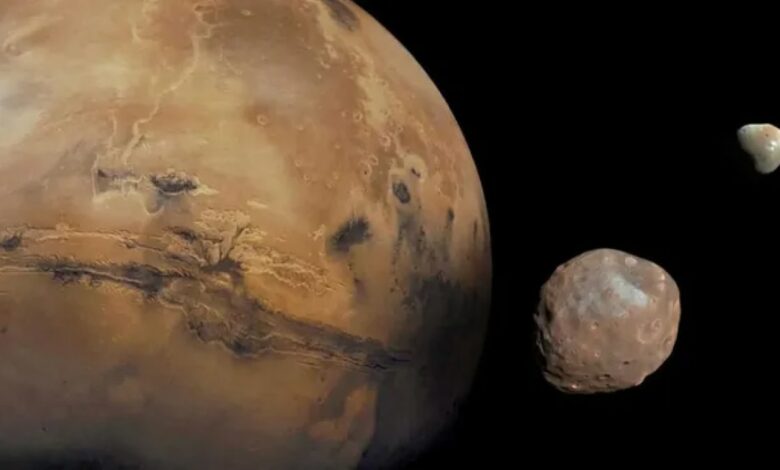Two moons of Mars may have formed from asteroids

Mars’ moons, Phobos and Deimos, could have formed from the remains of an asteroid that was destroyed by the planet’s gravity. Researchers from NASA and Durham University used advanced computer simulations to investigate how such an event could have unfolded. These findings provide a compelling new explanation for the origin of Mars’ two small moons, which have long puzzled scientists.
A new model for moon formation
According to one study published in the Icarus Journal on November 20, a large asteroid, after straying too close to Mars, exceeded the planet’s Roche limit – a critical distance where tidal forces exceed an object’s structural integrity – leading to its disintegration . The resulting debris would have gradually coalesced into Phobos and Deimos, according to simulations. Dr. Jacob Kegerreis, a scientist at NASA’s Ames Research Center, said in a statement that this new model offers an “exciting” alternative to previously considered theories about the formation of the moons.
Phobos and Deimos are unusual among the solar system’s moons. Although their irregular shapes and small sizes resemble asteroids, their circular orbits, aligned with Mars’ equatorial plane, suggest they formed in orbit around the planet. Previous theories, such as their origin by impact or asteroid capture, have struggled to fully explain their characteristics.
Simulations provide answers
Using Durham University’s supercomputers, researchers ran hundreds of simulations, adjusting variables such as the size, speed and proximity of Mars. The results indicated that enough fragments could have survived to create a debris disk around the planet, eventually giving rise to the two moons. Dr. Jack Lissauer of NASA Ames explained in a press release that this model allows for efficient distribution of lunar construction materials, even from a relatively small parent planet.
Future tests with MMX Mission
The Japanese Aerospace Exploration Agency’s (JAXA) Martian Moons eXploration (MMX) mission, set to launch in 2026, is expected to provide further insights. The mission will return samples of Phobos, which will be analyzed for their composition. If similarities to Martian material are found, it could support the impact hypothesis, while asteroid-like material could validate this new model.
This research could also advance the understanding of planetary interactions with smaller bodies throughout the solar system, opening doors for further research into moon and ring formation.




